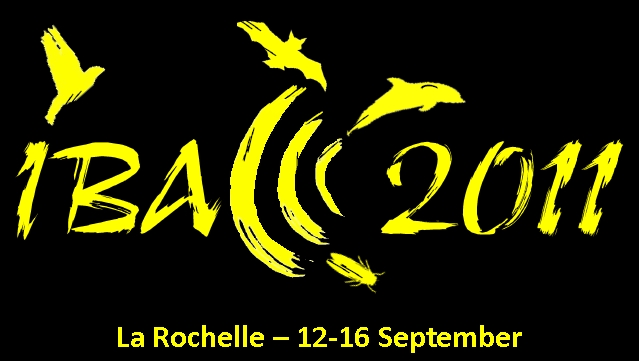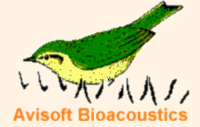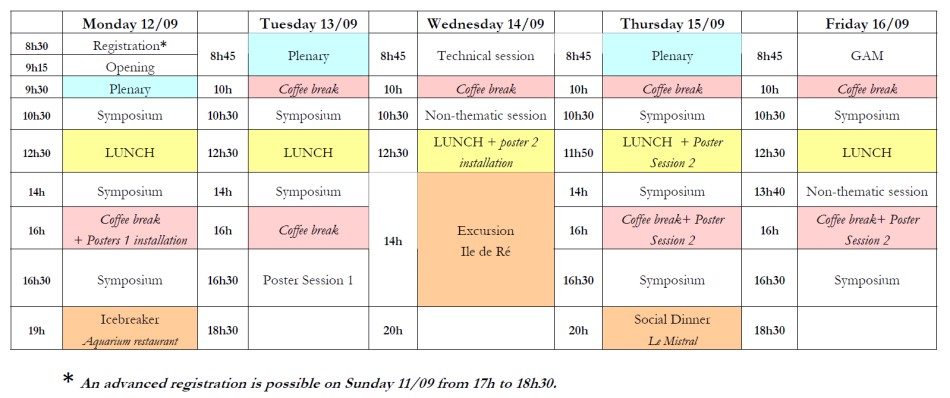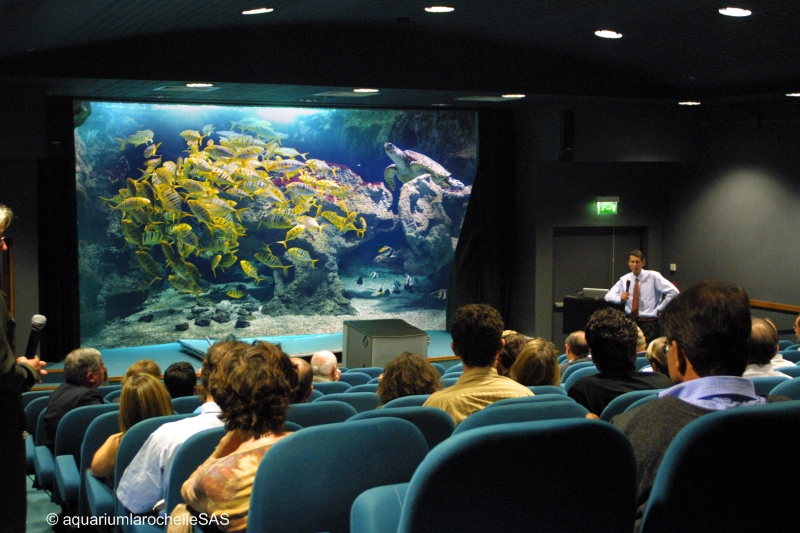

Sponsors |
 |
 |
 |
The scientific program will be composed of sessions of plenary talks, thematic and non-thematic symposia, and poster presentations.
The conference will start from Monday 12th Sept at 8h30 until Friday 16th Sept at 18h30. See a preliminary schedule below.
In order to welcome more participants, the conference will take place in two rooms: the main amphitheater (130 seats) and an additional amphitheater (40 seats, close to the main one) where talks will be retransmitted in live (audio & video).
FINAL PLANNING new

A final program of the conference can be download here.
A list of posters (sessions 1 & 2) can be found here.
PLENARY SPEAKERS
Bioacoustics and Honesty in Vertebrate Communication: Beyond Handicaps
Prof. Tecumseh FITCH, Dept. of Cognitive Biology, University of Vienna, 1090 Vienna, Austria
Founding Researches on Acoustic Communication in Primates
Dr. Jean-Pierre GAUTIER, CNRS - Université de Rennes 1, France.
Bat echolocation - molecular evolution, adaptation and communication
Pr. Gareth JONES, School of Biological Sciences, University of Bristol, UK.
THEMATIC SYMPOSIA
Only presenting authors are listed
Underwater communication: O. Adam & G. Pavan
Acoustic detection of beaked whales. comparison of different equipments and techniques - Gianni Pavan
Estimate the density of Antarctic blue whales using their calls from a passive acoustic sensor - Rocio Prieto Gonzales
Killer whale playbacks induce modifications in cetaceans' behaviour - Charlotte Curé
As sexy as my song: relation between vocal behaviour and mating success in the Lusitanian toadfish - Clara Amorim
Role and information content of male aggressive sounds in a cichlid fish - Frederic Bertucci
Studying the effect of anthropogenic noise on populations of wild fish: techniques and logistics - Ilaria Spiga
Impact of anthropogenic noise: Arthur Popper & Henrik Brumm
Overview effects of anthropogenic sounds – Arthur Popper
Overview of basic principles of anthropogenic effects– Robert Dooling
Environmental acoustics - basic principles –Ole Larsen
Noise Impacts in Air-Adapted Ears: Mechanisms of Damage, Recovery, and Permanent Loss– Darlene Ketten
Response of birds to anthropogenic sounds – Henrik Brumm
Aquatic animals and human-generated sound – Anthony Hawkins
Sound Production and Hearing Mecanisms: R. Suthers, D. Robert & F. Goller
Sound radiation in crickets - Fernando Montealegre
Insect Tympanal Ears: Sophisticated Mechanics in 'Simple' Hearing Organs - James Windmill
A potential intermediate in the evolution of superfast sonic swimbladder muscles in fishes - Michael Fine
The onset of phonation in anuran vocal folds - Marcos Gridi-Papp
Control of sound frequency in bird song - an integrative view - Franz Goller
Superfast muscles set maximum call rate in echolocating bats - Coen ElemansBrain Processing of Auditory signals: F. Theunissen
Functional representation of learned communication signals in the songbird brain - Isabelle George
Of Mice and Moms: Auditory processing of behaviorally relevant vocalizations - Robert C. Liu
Relating human and monkey brain function for communication - Chris Petkov
Neural Adaptation in the auditory system of grasshoppers: competing demands for object recognition and localization - Jannis Hildebrandt
Signal selectivity and sensory-motor gating in the midbrain of frogs - Hoke Kim
Efficient encoding of behaviorally relevant sounds in the auditory midbrain - Christine Portfors
Hormones and Communication: M. Gahr
Melatonin affects the temporal pattern of vocal signatures in birds - Sebastien Deregnaucourt
Effects of social status, sex and hormones on song in cooperatively breeding white-browed sparrow weavers - Cornelia Voigt
Impact of developmental stress on hormones, song and song perception in zebra finches - Stefan Leitner
Stres-induced vocalisations in male Zebra Finches: clues of expression of emotional state? - Emilie Perez
Adaptations to Environments: P. Narins & F. Rybak
Diel adaptation of echolocation click characteristics of melon-headed whales to changes in ambient noise - Simone Baumann-Pickering
Fixed or flexible? Ecological and evolutionary implications of plastic strategies in acoustic communication - Lucia Ziegler
Seismic signaling in a heterogeneous environment - insights from wolf spiders - Eileen Hebets
Testing alternative hypotheses for evolutionary diversification in an African songbird - Alexander Kirschel
Environmental determinants of chorusing in Iberian Hyla: Acoustic monitoring of populations at thermal extremes - Rafael Marquez
Evolution of advertisement calls in torrent habitat: communicating despite noise - Sandra Goutte
Inter-sexual Communication: D. Reby & C. Vignal
Fallow buck groans: A robust example of honest signals - Elodie Briefer
Investigating intra- and intersexual communication in the context of hybridization within two polygynous deer species - Megan Wyman
Performance limits, signal diversity, and indicators of body size and age in the purple-crowned fairy-wren - Michelle Hall
Singing rock hyraxes exploit conspecific calls to gain attention- Amiyaal Ilany
The information content of giant panda (Ailuropoda melanoleuca) sexual calls - Benjamin Charlton
Geographic variation in the pair-forming acoustic communication of a duetting bush-cricket in the Carpathians - Kirill Mark Oci
Vocal Signatures: A. Lemasson & I. Charrier
Vocal Signatures in Saccopteryx bilineata - Insights from a Vocal Learning Bat - Mirjam Knornschild
Individual vocal discrimination in meerkats: absent or not recognized - Marta Manser
Group-level vocal signatures and responses in social birds - Andrew Radford
Individual vocal flexibility in female Diana monkeys - Agnes Candiotti
Vocal communication in male northern elephant seal competitive interactions: honest or learned associations? - Caroline Casey
Expression of affect-intensity and identity in infant isolation calls of domestic cats - Marine Scheumann
Signal Processing: K-H Frommolt & R. Mundry
Categorinzing vocal repertoires - Kurt Hammerschmidt
Estimating the number of calling individuals in the base of multichannels recordings - Karl-Heinz Frommolt
Localizing individuals from their vocalisations - Chloé Huetz
Auditory stream segregation in gray treefrogs, Hyla chrysoscelis - Vivek Nityananda
Classify or not? Quantifying repertoire size when it seems impossible - Sandor Zsebok
Non-linear phenomena in Petrel sounds (Pterodroma sp.) - Juha Tanttu
Social networks: T. Dabelsteen & H. Courvoisier
Choruses as communication networks: Adaptations, emergent properties, and feedback loops - Michael Greenfield
The role of social factors for song learningin juvenile song sparrows - Chris Templeton
Effects of personality on singing and spatial behaviour in communication networks of great tits - Marc Naguib
Acoustic communication networks in the Winter wren, Troglodytes troglodytes - Sol Camacho
Zebra Finch Conversations - Andries Ter Maat
Vocal matching through imitation of contact calls in Peach-fronted conures (Aratinga aurea) - Heidi Thomsen
GUIDELINES FOR TALKS AND POSTERS new
Each talk will last 15 minutes and will be followed by 5 minutes of questions. The time schedule is very tight, so please, do not pass the 15min.
Talk presentation must be saved in powerpoint 2007 (or previous versions) and/or Adobe PDF.
The posters must be A0 size at maximum, in portrait orientation (vertical), so 84.1 cm wide and 118.9 cm high.
Talks will be given in the Amphitheater Rene Coutant with an amazing view on the tank of turtles and exotic fishes.


